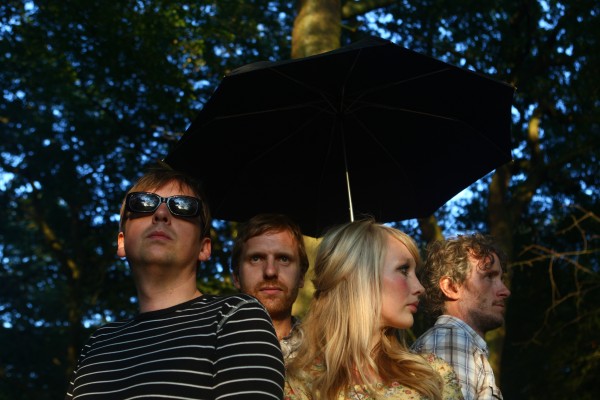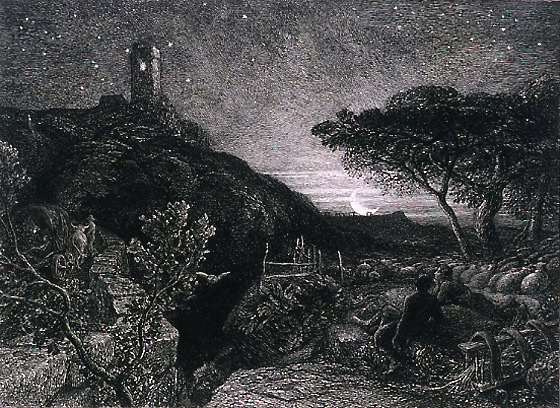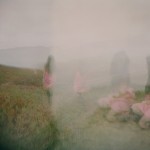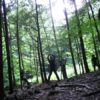[Photo by Andy Willsher]
Recording Under the Influence is a recurring self-titled feature where we ask artists to ignore their musical inspirations for a minute and share what really went into the making of a particular record. In this week’s installment, The Clientele‘s frontman, Alasdair MacLean, reveals the rather haunting roots of their fifth full-length record, Bonfires on the Heath (Merge). And what do you know? All of the album’s woozy nature walk imagery suddenly makes sense.
–
Dulwich Wood
This is the [forest] near my house, which I often run through in the mornings. It’s not that big, but it’s very old, the last remnant of the Great North Wood which once stretched all around South London. It has Victorian ruins, a hidden pond, and lots of criss-crossing trails. Wild garlic and morel mushrooms grow there. I’ve seen it in all
seasons and I think it has an objective spookiness. I wrote “Harvest Time” and “Bonfires [on the Heath]” after walking in this wood. I’ve often had the irrational feeling of being watched there; I’m being melodramatic of course, but it’s a sinister place.
–
Running
When we were making Bonfires on the Heath, I was running a lot. I remember running down a lane in early spring. There wasn’t much ligh, and the blossom was just beginning to form on the hedges. Young birds were singing in a wood, echoing each other’s voices; I had a sense of being there but not there–riding through the moments. I thought to myself, ‘the world is an illusion, and there are secret places where this is revealed, and I’ve stumbled on one of them.’ So I went home and comforted myself with a peanut butter bagel.
If you run for long enough, it can be quite trippy. You feel like you’re floating; you have to keep stamping the ground to keep yourself up in the air. And it seems like the longer you float above the ground, the more removed from it you begin to feel. I found that I often ended up in a trance, and I couldn’t tell where I ended and everything else began.
The other good thing about running is if you follow the same route at the same time all year round, week by week you notice the way the light and the seasons gradually change things. You build up a very detailed knowledge of your world, which no amount of being harassed at work can spoil. You’re grounded.
–
Samuel Palmer
Samuel Palmer was a 19th century painter who saw ecstatic and spiritual qualities in the English countryside. The land in his paintings almost seems to glow from within. He painted fields at night with a harvest moon hanging over them, ghost-figures walking through the furrows. It reminds me of the farmland around Hampshire, where I grew up. I can almost see it through his eyes. And I think he captures the eerie feeling I get from the woods, from running early in the morning. Nature and the year as something alive, watching you as you pass by. It’s a benign, holy thing for Palmer. I find it a bit more nightmarish.
In the end, he lost his ecstatic vision and ended up as a Victorian academic painter–forgotten until his rediscovery in the mid-20th century. I have a horrible feeling the same thing is happening to me.
–
Suburbia
I come from the suburbs, southwest of London. To grow up in them in the ’80s was magical. I learnt the truth of Erik Satie’s quote that boredom can be mysterious and profound. We were on the edge of the countryside and the edge of the town, but never fully in either. Nothing seemed quite true, or quite complete, and this in itself was strange and beautiful. All my ties with suburbia are broken these days; sadly, I have no reason to go back there, no one left to visit. But the unreality and the melancholy of the suburbs inhabit all the Clientele’s songs.
So this record is, as always, a celebration of suburbia.
–
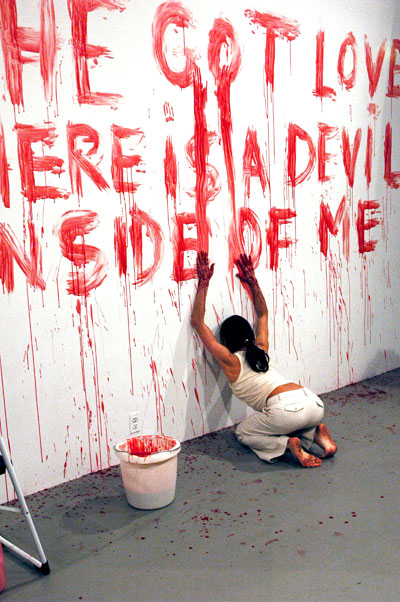
Ana Mendieta
Ana Mendieta was an artist from the ’70s and ’80s whose work inspired a lot of the music on Bonfires. Most of her art was totally ephemeral; impossible to sell, created and recorded just for a moment in time and then allowed to disappear. In her ‘Silueta’ series, she sculpts human figures from natural materials–earth, wood, fire, leaves, or her own body–and then photographs them in a natural setting. It’s absolutely haunting, I think she’s blurring the boundaries between the world and herself. She’s disappearing into the land. There’s something ancient and frightening about it, something very Wicker Man.
